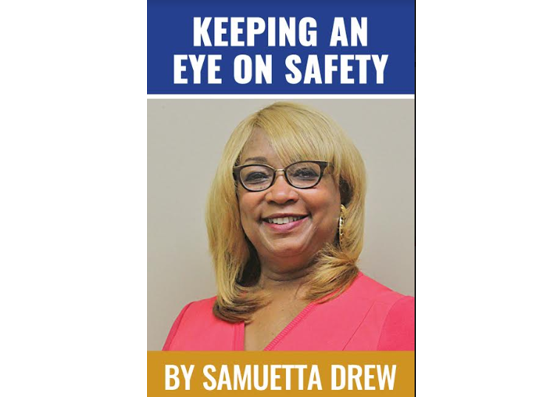By Samuetta Hill Drew
As we started the discussion last week about safety measures to use when driving during inclement or severe weather conditions, it was stated this week’s focus would be on driving during heavy rain and/or thunderstorms, as well as many other safety weather hazards which often accompany these types of weather patterns. Let’s not dilly dally, but rather jump right in and be straight forward – the fact of the matter is you should avoid driving during very heavy rain or a thunderstorm, if possible. The other fact of the matter is a majority of Alabama drivers don’t have a choice, between work obligations, taking children to school and picking them up, after school activities, along with other daily life situations driving in hazardous weather conditions sometimes is a must. Therefore, let’s try and stay as safe as possible while driving through various daily life scenarios because, there’s not a safe way to drive through a thunderstorm or very heavy rain.
During heavy rain the most obvious is turn on your wipers and maintain at the necessary pace required for visibility. A beam wiper blade will provide more uniform contact with the glass window in the rain. Remember it is suggested that windshield wipers be changed every 6-12 months for optimum performance.
- Turn your headlights on. Most recent cars’ headlights will automatically turn on if the weather gets a little dark outside. Headlights can help with visibility which is compromised during rainy weather conditions. All states require headlights to be used during low visibility. Some states require headlights if your wipers are being used.
- Make sure your windows are kept clear. This may require you to use your defroster or air conditioner.
- Patience is a virtue which is required during this time. Reduce your speed and leave more room when stopping. Wet pavement may cause loss of traction and lead to sliding or hydroplaning.
- NEVER cross a flooded roadway. You never know how deep the water is and you may find yourself getting caught in a flash flooding situation. It is best to find an alternate route.
- Some believe the myth that keeping the vehicle on cruise control is best. This is not true. It is best to turn off your cruise control so the driver can control the necessary speed and be able to react to the conditions.
- Make sure you are aware of the local laws about driving with hazard lights blinking. Most states prohibit it because it becomes a distraction to other drivers.
- Waiting a thunderstorm out is always best. The duration of a typical storm is about 30 minutes. When this is not possible, it is best to turn on your emergency lights and pull over to the side of the road to wait it out. This is because of the many dangers associated with driving during a thunderstorm such as little or no visibility. So, don’t expect to see very much of what’s in front of you, not even a vehicle.
- Your vehicle’s traction is going to be very low during a thunderstorm. This means it will take longer to brake and reduce your overall control over the car.
- Driving through puddles of water is also a danger. These standing bodies of water can ultimately be somewhat deceiving. What may appear to be a harmless small body of water could be hiding mud, a pothole or a dangerous depth. Remember driving through just two feet of water can carry most cars off the road.
Other dangers associated with thunderstorms are heavy winds. The strength of these winds is sometimes strong enough to jerk your car, forcing you to keep a firm grip on the wheel to prevent ending up in another lane or on the side of the road. With strong winds often comes flying debris like tree limbs or other various objects. You must always stay alert.
Where one of the safer places to wait out a storm is your car with the exclusion of walled and roofed home, lightning poses another dangerous threat. This is why it is important to keep your windows and doors closed. Other drivers though may pose the most dangerous threat of all. Therefore, the driver must be acutely aware and alert when Keeping an Eye on Safety if driving during a thunderstorm. This is why waiting it out, if possible, continues to be the best safety measure to practice.





